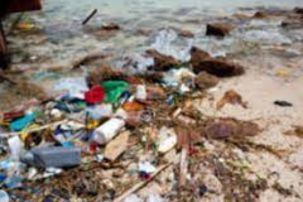Lesson summary
This tuning in activity is designed for a flipped classroom, where students learn new content by watching a video in their own time. This strategy provides the opportunity for students to build their knowledge, attitudes and values by themselves, thereby freeing up class time for hands-on work.
Learning intentions:
Students will...
- explore marine debris
- build their thinking and questioning skills.
Lesson guides and printables
Lesson details
Curriculum mapping
Australian Curriculum content descriptions:
This lesson can be used with all relevant learning areas of the Australian Curriculum. Cool Australia’s curriculum team continually reviews and refines our resources to be in line with changes to the Australian Curriculum.
Time needed: 20 minutes.
Level of teacher scaffolding: Low – allow students to explore the topic independently.
Resources required
- Internet
- Laptops and earphones
- Student Worksheet
Additional info
Following this lesson plan is an ideal way for your school to introduce Zoos Victoria’s Seal the Loop program. You’ll be joining other amazing teachers in making a difference and creating positive environmental change. Go to Zoo Education Online to find further support for you to help you develop your own Seal the Loop program.


Welcome back!
Don't have an account yet?
Log in with:
By signing up to Cool.org you consent and agree to Cool's privacy policy to
store, manage and process your personal information. To read more, please see
our privacy policy here(Opens in new tab).
Create your free Cool.org account.
Many of our resources are free, with an option to upgrade to Cool+ for premium content.
Already have an account?
Sign up with:
By signing up to Cool.org you consent and agree to Cool's privacy policy to
store, manage and process your personal information. To read more, please see
our privacy policy here(Opens in new tab).